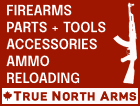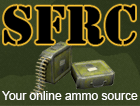https://www.outdoorlife.com/coyote-nation-crash-course-in-coyote-hunting/
Coyote Nation: A Crash Course in Coyote Hunting
Ever adaptable and always elusive, Canis latrans thrives in varied landscapes across the country. Whether you’re working on your hundredth coyote or dreaming about dropping your first, our complete coyote hunting guide shows you how to hunt down success this winter
By Tom Carpenter, and Toby Walrath
Updated: January 25, 2021
It used to be that when small-game, upland bird, waterfowl, and big-game seasons ended, a hunter finally had a chance to pull up an easy chair next to a cozy fire, rest up, and reflect on an autumn well spent. Ditch that notion. Winter is time to hunt the hunter. Coyotes are out there waiting in habitat near you, and all you have to do is go after them to experience some of hunting’s knee-shakingest thrills with these coyote hunting tips.
While the basics of coyote hunting are simple—set up with visibility and minimize movement; keep the wind in your face or crossing; call in dogs by appealing to their stomach, territoriality, or libido—success hinges on the details. It pays to match your approach to the habitat, and assemble your gear with meticulous care.
Easy chairs are for old farts. Get out there now where the air is clean and the coyotes roam.
Shots on coyotes in timber are going to be up close. A shotgun is ideal.
Coyote Hunting Tips for the Timber
Coyotes in forested areas are spread out and challenging to find. But there are ways to locate them and bring them in.
Coyote Strategies
Though traditionally thought of as creatures of the wide-open West, coyotes have moved into timber country in untold numbers in recent years. The challenges of coyote hunting expansive woods are clear: The cover never ends, and the calling noises you make with the coyote caller will only reach so far. Here are three solutions.
1. In flat country, search out clear-cuts, meadows, loggers’ landings, marsh edges, cover seams, and other openings, and set up there. You’ll gain much-needed visibility, your calls will carry farther, and you’ll be where the coyotes are—that combination of clearings, transition zones, and thick cover where prey (including cottontails, mice, voles, and moles) reside.
2. In hill country, head for hollows, gullies, valleys, draws, washes, and other terrain that lets you set up on one side and survey the opposite slope for approaching varmints.
3. In big timber habitat, set up often, call loudly, and wait a short time (15 to 20 minutes, with three to five distress calling sequences in there), then move on. Covering ground, and lots of it, is the way to find a coyote that will hear you; the dogs have many places to be, and call sounds do not carry far.
There’s another secret to shooting coyotes where the cover sprawls on forever: Scout hard. Here are three effective approaches. Spend a starlit winter evening out in hunting country, standing by your vehicle and listening for the yips, yowls, and howls of coyotes. Triangulate the approximate location of the calls (they carry better on a clear winter night) and you’ll know if there’s a pack in the area and where you might start your search.
An even better time to do this kind of scouting is the last hour before dawn, when the coyotes will be close to their denning area. It’s like listening for a turkey gobble to determine where his roost is. Hike in toward the howls, and hunt.
Or after a fresh snow, drive back roads and trails, and look for coyote tracks crossing. The purpose isn’t to take off and track the dog down (a formidable task), but rather to just know there are coyotes working the area.
Calling Strategies
Big woods are a good place to reach out with the volume that an electronic call provides. One of the best on the market is FoxPro’s Shockwave. Check out the FoxMotion, FoxPitch, FoxFusion, and FoxData features. And don’t let the word “fox” in the name fool you—this is a coyote-hunting tool with real power behind it.
Guns & Glass
By their very nature, big woods mean close-range shooting. This isn’t the place for long-range rifles and high-powered scopes. Rather, the best coyote gun in this situation is a shotgun to get on your target fast. Turkey shotguns make great predator guns because they feature short barrels that are easy to hold and aim, and tight chokes. For under $300, the rugged Stevens Model 320 Turkey Gun in 12-gauge sets you up for dual-season action.
You’ll be just fine with open sights. But if you like optics, couple the 320 with Weaver’s Rapid Fire Red Dot Sight, which will get you on that dog quickly and aiming fast.
Decoy Tips
With its adjustable speeds, the Primos Sit N Spin Crazy Critter coyote decoy offers both erratic movements and a real rabbit look.
Farm coyotes are smart coyotes.
Coyote Hunting Tips for Farmland
Farmland is rich with coyotes...and coyote hunters. It takes woodscraft and effort to dupe an experienced dog into range.
Hunting Strategies
After exurban and suburban areas, agricultural habitat has experienced the biggest increase in coyote populations over the last decade. That doesn’t mean farmland song dogs are easy to hunt. On the contrary: These coyotes are pressured and persecuted hard by everybody and their uncle. Folks who hear the dogs howling at night know where they live and pursue them with a vengeance—and educate them in the ways of hunters.
Here’s another challenge: Agricultural coyote habitat varies widely. Rolling dairy farm country with a mix of woodlots, row-crop country punctuated with sloughs and grasslands, beef country with its expansive pastures and extensive wooded river bottoms—they’re all different, and no single setup and approach fits all. As a hunter, you have to be as adaptable as the coyotes you’re chasing.
All these landscapes have two things in common, though: limited cover, and ample open areas across which to draw curious coyotes. The trick is getting in unseen with the wind blowing from likely coyote hideouts toward you, setting up secretively, calling with a purpose, and staying patient with these suspicious and reluctant canines.
Don’t overestimate the amount of cover a coyote needs. Where I hunt coyotes in western Minnesota, frozen cattail sloughs serve as the hideout of choice. In the southern Wisconsin dairy farm country where I grew up, brushy abandoned pastures harbor higher densities of coyotes than do traditional woodlots.
Never underestimate the wariness of farmland coyotes. They may be used to vehicles driving around, but not yours; sneak in on foot. Farmland parcels can be small, with only a limited area or two for setups. If the wind is wrong, hold off and hunt the area another day rather than educate the coyotes even more.
Set up across fields, pastures, or meadows, and call into cover—#grasslands, wetlands, fence lines, brushy thickets, forgotten orchards, fallow meadows, ditches, and other spots where prey (rabbits, pheasants, quail, mice) hide out and coyotes would be prowling. Keep the wind blowing from the cover to you, or flowing cross-lots, and draw the coyotes out.
Calling Strategies
Fat farmland coyotes need big sound to get their attention, and some finessing to get them to commit. You can do both jobs with one call. Primos’ Raspy Coaxer (1) creates long-range prey screams to get things started. Then, by covering one port with your finger, you can make little whines and whimpers.
Some farmland coyotes have heard it all when it comes to rabbit-in-distress sounds. That’s when you need to appeal to their territoriality or (late in winter) their sex drive.
Carver Predator Calls’ Big Dog Howler and Pup and Female Howlers are hand-carved, human-tuned calls that are ready to make the coyote sounds you need.
Guns & Glass
A coyote gun that’s smaller than your deer gun is more fun—and more palatable to landowners. Let’s go all-in for a rifle under $1,000 while we’re at it.The Savage Model 25 Walking Varminter carries a budget-friendly price but performs like a much more expensive rifle. And it comes in one of the perfect small-#centerfire coyote calibers, the .22 Hornet.
Bushnell’s Trophy 3–9x40 is bright, lightweight (to go with the rifle), and affordable.
Decoy Tips
The Mojo Critter coyote decoy is lightweight, simple to use, and operates on four AA batteries. It’ll give that coyote something interesting to focus on instead of you.
Prairies, plains, and Western hills constitute classic coyote range. But shooting an open-country song dog is never easy.
Hunting Strategies
Classic coyote hunting begins west of the 100th meridian. Every serious coyote hunter owes it to himself to hunt coyotes out where the deer and the antelope play. You can have more action here in three or four days than you can generate in an entire season elsewhere.That brings up another important point: The West is a perfect place for a new predator hunter to gain experience and gut-level confidence, knowing that coyotes really can be called in. With high populations of coyotes, there’s always more opportunity awaiting if you commit mistakes on your call or miss with your rifle.
But don’t get the wrong idea. One of the worst miscues you can make with Western coyotes is being overconfident and nonchalant. These varmints are ready to beat you up. All that open country both helps and hurts: You can see coyotes coming from a long way off and be ready for them, but those dogs can spot you in a heartbeat if you’re silhouetted or making sudden movements.
So be a real sneak as you move about or travel between setups. This means skirting below the crests of ridges and hills, and never skylining yourself. Only cross heights at dips or saddles. And for heaven’s sake, don’t stand on a hilltop and glass.
When moving into a likely spot for a setup, stay low, be silent, and slide in quietly. Treat the situation like a coyote is within a hundred yards—because he might be.
Five Prime Setup Spots for Western Coyotes
Within sight of a rocky bank, jumble, ridge, or escarpment.
Just beyond cedar thickets, willow tangles, and other daytime coyote hideaways.
In river-bottom habitat that’s patched with brush and meadows.
In rolling pastures of low sagebrush or other shrubs.
Anywhere the terrain is broken and inhospitable.
Believe it or not, many ranchers welcome responsible predator hunters. Get landowner contacts from local chambers of commerce or cattlemen’s associations. Most landowners are only too happy of get rid of a few coyotes in winter, when the cows are in feedlots.
The West also offers ample Bureau of Land Management (BLM) acreage, much of which is open rangeland and prime for coyotes. The best way to get maps: Go to blm.gov, click on “Offices/Centers,” and contact the state office for the area you want to hunt.
Calling Strategies
Sometimes you need to “match the hatch.” Western coyotes love chowing down on a big old jackrabbit, and the Jack Rabbit Distress call from Bugling Bull provides deep-throated, slower squalls that mimic a jack in trouble.
Wide-open country begs for electronic callers that can really reach out and do the work for you. Primos’ Dog Catcher (which you can operate via remote control from up to 150 yards away) comes preprogrammed with 10 sounds, and allows you to play two sounds at once.
Guns & Glass
Part of the allure of Western coyotes is the chance to take them at long range. For that, you need a rifle that reaches out fast, shoots flat, and hits where you point it. You could spend $10,000 on that gun, or you could spend around $1,500. Let’s consider the latter.
It’s hard to beat Tikka for value and accuracy, and the Tikka T3x Varmint comes in at under a grand to boot. A free-floating barrel benefits accuracy. It comes in both .22/250 Rem. and .223 Rem, and now 6.5 Creedmoor. I prefer the .22/250, which shoots a bit flatter and faster than the .223 Rem.
For glass, go with the Leupold VX-2 4-12x40mm. Leupold offers the clearest glass and reliability for the price.
Decoy Tips
The windy West is the perfect place to go low tech: Tie a feather to a stake or twig and let it fluff, ruffle, and blow in the breeze (5).
coyotes in the suburbs
A coyote cruises across a road in suburban Ohio.Tom Uhlman/Alamay
Coyote Hunting Tips for the Suburbs
These days, coyotes live on the edge of, and even in, suburbia. Here's how to hunt these savvy predators on small parcels
Hunting Strategies
Proof positive of the coyote’s incredible adaptability is its foothold in exurban and suburban areas, sometimes within sight of city skylines. It’s hard to find a community anywhere across the country that doesn’t have a coyote problem in its outlying areas. You can be part of the solution.
The good news is that suburban coyotes are underhunted. The bad news is, they’re largely on private land. Sometimes that’s the chief trick for suburban predator hunting—just getting access. To do this, you need to make a public-#relations play. Knock on doors in neat street clothes (not your hunting camo) and explain your interest in hunting coyotes and taking a few of them off the neighborhood’s hands. Leave a card identifying yourself.
You’ll be surprised at how many landowners are willing to let you in, especially if you talk a lot about gun safety. Promise to refrain from using a high-powered rifle. Instead, stick with shotguns, rimfires, or light calibers like the .17 Rem. and .22 Hornet. And if a landowner has reservations about even those firearms, offer to use a crossbow or (better yet) a high-powered airgun.
Once you’re hunting, stay under the radar to prevent encounters with folks who might be driving, biking, walking, or jogging along roads or trails.
Hunting only at dawn and dusk solves some of these issues, and those are good times for coyote activity anyway. Another trick is to hunt populated suburban and exurban areas only on weekdays, when fewer people are about. That’s a lot about PR, but you won’t be doing much suburban hunting without it.
Once you’re in the field, hunting city-cousin coyotes takes on a few twists. These dogs are highly opportunistic and often quite competitive with one another, so they are usually going to come in fast to rabbit and other distress calls. If a coyote comes in and you shoot it, stay put for five minutes and call again; there might be another dog in the vicinity. Property lines can be tight in these areas, so hone your skills with squeaker calls in case you need to coax a coyote through a fence or across a road and onto land where you have permission to hunt and shoot.
RELATED: The 7 Best Predator Mouth Calls
Coyote Hunting Tips, for Calling
When a smart citified coyote gets coy on you, you have to give him a little bit of soft love. With a little finesse from your fingers, Knight & Hale’s Mouse Squeaker makes the irresistible little pleadings you need to lure that dog a few steps more. ($10)
The suburban predator hunter needs versatility in his arsenal, and a mouth call such as the Primos Hot Dog has it. You can make coyote yips and howls when the mouthpiece is attached, or remove the mouthpiece and make distress calls imitating birds, cottontails, squirrels, and fawns.
Guns & Glass
Pyramyd Air’s Dragon Claw is a .50-caliber pneumatic air rifle that throws a 225-grain projectile at 679 feet per second with 230 foot-pounds of energy. That’s plenty of punch to take down a coyote at 50 yards. As an added benefit, there’s no noise to call attention to you.
For less than $200, the Leapers UTG Accushot 1–8x28 scope pairs well with the Dragon Claw. The low magnification is perfect for closer-in suburban hunting situations.
Decoy Tips
Western Rivers’ Deceptor Rabbit coyote decoy looks like the real thing, can be used on a stake or on the ground, and is remote-capable.
A Scoring System to Assess Prime Coyote Sets
Habitat will make or break your coyote hunt. But knowing what coyotes need to make a living is only part of the equation. Identifying land features that optimize your ability to remain hidden make up the rest. I use a quick scoring method to rate the sign and landscape, so I know in a flash whether a place is worth hunting or not.
Tracks and Signs: 0-3 Points
No matter how good a location appears, if you’re not seeing coyote tracks around, you are wasting your time. Good locations have a set of fresh tracks—that earns a single point. When you find a spot that is #####-crossed with coyote tracks, give it 2 points, then figure out the best way to approach the location using cover to reach an elevated vantage point. Other sign, like a recent deer kill, will add a point to this category.
Cover: 0-2 Points
Award full points (2) for those places that have enough cover to conceal you, but also the right mix of brush and terrain that allow a coyote to approach your location undetected. A full-points stand location overlooks a valley bottom that’s between 300 and 500 yards wide. The bottom has enough brush to make a coyote feel that he’s concealed, but enough openings to allow you to detect his approach and get a clear shot at him.
Approach: 0-3 Points
Getting into the calling location undetected is a hunter’s biggest challenge and the most overlooked aspect of coyote hunting. Full points (3) go to locations that provide the terrain necessary to hide your vehicle and get you and your gear in position without being seen or heard before you start calling. If you can see the calling area when you park the pickup truck, the spot gets zero points.
A shiny window, a rattling engine, or a clanging gun case can’t be avoided 100 percent of the time. But by picking out good approaches with heavy timber or hills, you will be hidden from view and most sounds will be muffled or deflected. Some of the best locations are just off main roads where ambient traffic noise dilutes any sounds you might make. Use any land features to remain hidden from the time you leave your vehicle until you are in position to hunt. Add an extra point for approaches with a stiff wind in your face.
Elevation: 0-2 Points
A spot that elevates your hide above the surrounding terrain get s a full 2 points in this category. These locations enable you to see farther and allow your scent to remain above an approaching dog. If you suspect there are coyotes working an area (because the area scored high in sign points), then sneak in from above and glass before you do any calling. If you use an electronic call, set it up below you in order to draw coyotes in at a lower elevation, where you’ll better be able to see them coming.
Putting Your Coyote Hunting Score Together
Whether you plan to sit it out, glass-and-stalk, or call, try to get as many of these arrangements working in your favor as possible. Approach and sign—with a maximum of 3 points apiece on my scale—are the two biggest factors. But a location should accrue at least 8 total points in order to make it worth your time.
I like to evaluate every situation in the order presented here. Find tracks and scat first, and determine if there is enough cover for concealment. Next, figure out if you can approach the location undetected and pick a route. Once you’ve got those elements, you just need to choose a good vantage point, and you should use any elevation the area provides. Look critically at what the terrain offers you and do the math to make accurate assessments quickly. Eight points is good, but 10 points is coyote-hunting perfection.
|









 Reply With Quote
Reply With Quote


